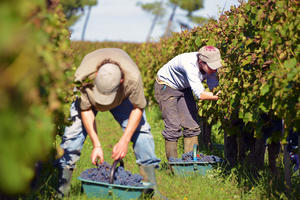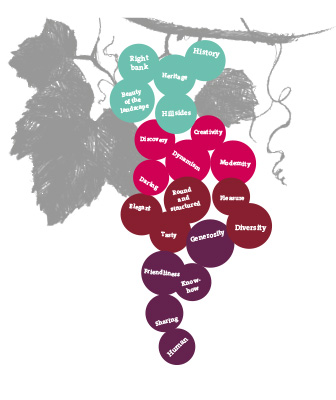THE QUALITY AND KNOW-HOW AT THE HEART OF OUR WINES

Ideally located vineyards
Spread over 5 clearly identified regions, with limited boundaries, the vineyards of the Côtes are located on hillsides with mostly clay-limestone soils.
An ideal geographical situation which allows them to benefit from strong sunshine, good run-off of rains and drainage of the soil, thereby giving wines of optimum quality. Also of note is the climate linked to the proximity of the rivers: all the regions are on the banks of the Dordogne or the Garonne.
So much in common and so many assets that lead to high quality in the ripening of the grapes, which later reveals a better aromatic expression.
A commitment to respect for the environment
The growers of the Côtes de Bordeaux care about the environment. A good number of them are certified organic or in the process of converting, but also in biodynamic, Terra Vitis and other certifications that respect the environment.
More and more growers are also signed up to the Bordeaux wine Environmental Management System, a real management tool for their companies, allowing them to control and reduce the impact on the environment. The Union des Côtes is further committed to greater involvement by the winegrowers on this theme, by supporting them in this initiative.
Finally, some growers located close to schools and childcare centres have signed up to a group project to plant hedges, led by their unions. These hedges allow for filtration of sprays, so as to avoid contamination of vulnerable people.These hedges, in addition to their beneficial effects on biodiversity and landscape planning, also serve to filter sprays used in the vineyard.
The environment is therefore a daily preoccupation for the growers, who have not waited for regulations before adopting means of production that respect their terroir, and conserve biodiversity and natural resources.
Blended wines
A speciality of Bordeaux, blending is one of the characteristics of the Côtes wines. This blending, as a function of how the varieties match and complement one another, results in varied styles of wine with a character and a personality of their own. The grapes in the Côtes de Bordeaux are harvested parcel by parcel, variety by variety.
The reds of the Côtes de Bordeaux are mainly made from the Merlot variety, associated with Cabernet Sauvignon, Cabernet Franc and Malbec.
For the whites, the major grape variety is Sauvignon, blended with Sémillon and Muscadelle.
Mastery of the production process
The vinification of Côtes de Bordeaux follows several steps: destemming, crushing, alcoholic and malolactic fermentations, ageing in tank and/or in barrels, blending and, finally, the making of the cuvées. Artisanal work in the vineyard and in the cellar combines tradition with modernity, respecting rigorous technical specifications.
The wines of the Côtes de Bordeaux are therefore prepared according to traditional Bordeaux methods to offer consumers wines that are always expressive and delicious.
They are also committed to respect for the environment: numerous winegrowers in the Côtes de Bordeaux have adopted the Bordeaux Wine Environmental Management System, an initiative to reduce the impact on the environment, while improving overall performance. In addition, a large number produce organic wines have converted to biodynamic farming.














